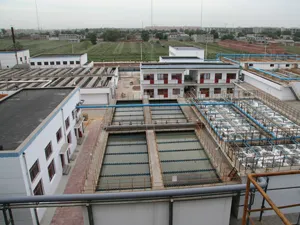Understanding API in Pharmaceuticals
Active Pharmaceutical Ingredients (API) play a crucial role in the pharmaceutical industry, being the essence of any medication. To grasp the importance of APIs, we need to explore their definition, production processes, regulatory framework, and the challenges faced within this vital aspect of drug development.
Defining API
An Active Pharmaceutical Ingredient (API) is the component of a pharmaceutical drug that produces its intended effect in the body. In simpler terms, it is the biologically active part of the medication that treats, prevents, or alleviates a disease. For instance, in a pain relief medication containing acetaminophen, acetaminophen is the API. While APIs are critical for the efficacy of drugs, they are often accompanied by excipients, which serve as inactive substances that help stabilize the formula, aid in drug absorption, or enhance the overall pharmacokinetics of the compound.
Production of API
The production of APIs is a highly sophisticated process that can involve various methods, including chemical synthesis, fermentation, and extraction from natural sources. Chemical synthesis is predominantly employed for small-molecule APIs, where active compounds are created through a series of chemical reactions. For biologics, such as monoclonal antibodies, the fermentation process is often utilized, leveraging living cells to produce complex proteins.
Quality control is imperative throughout the production process to ensure that APIs meet stringent regulatory standards. Manufacturers must comply with Good Manufacturing Practices (GMP) set forth by regulatory authorities, such as the U.S. Food and Drug Administration (FDA) or the European Medicines Agency (EMA). This ensures that APIs are produced consistently and meet quality specifications, as impurities or inconsistencies can significantly affect the safety and efficacy of the final drug product.
Regulatory Landscape
what does api means in pharma

The regulatory framework surrounding APIs is essential for ensuring public safety. Regulatory bodies require comprehensive documentation and data, including manufacturing processes, stability studies, and efficacy reports, before granting approval for drug products in which these APIs are used. This rigorous approval process is designed to prevent the market entry of substandard or contaminated drugs and to guarantee that approved pharmaceuticals deliver the intended therapeutic effects.
Furthermore, APIs are classified into various categories based on their risk profiles, which dictates the extent of scrutiny they undergo during the approval process. For instance, new molecular entities (NMEs) and biologics require more extensive evaluation compared to generic medications, primarily due to the complexities involved in their manufacturing and biological effects.
Challenges in API Development
Despite the advances in technology and regulatory frameworks, the production and development of APIs face several significant challenges. One of the primary concerns is the increasing complexity of drug formulations, which demand innovative API designs and production techniques. Many pharmaceutical companies are investing in research to develop novel drug delivery systems and APIs that are more effective and easier for patients to use.
Additionally, global supply chains present logistical challenges and can impact the quality and availability of APIs. Many pharmaceutical companies rely on overseas manufacturers for their APIs, making them vulnerable to fluctuations in geopolitical conditions, trade policies, and economic instability.
Moreover, the environmental impact of API production cannot be overlooked. There is a growing demand for sustainable practices in the pharmaceutical industry. Efforts are being made to adopt greener technologies and processes to minimize waste and reduce the environmental footprint of API manufacturing.
Conclusion
In conclusion, Active Pharmaceutical Ingredients (APIs) are the backbone of the pharmaceutical industry, responsible for the therapeutic effects of medications. Understanding the intricacies involved in the production, regulation, and challenges of APIs is crucial for the advancement of drug development and the continuous improvement of public health. As the industry evolves, so too will the methodologies, regulations, and innovations surrounding APIs, aiming to deliver safe, effective, and sustainable treatments for patients worldwide.

